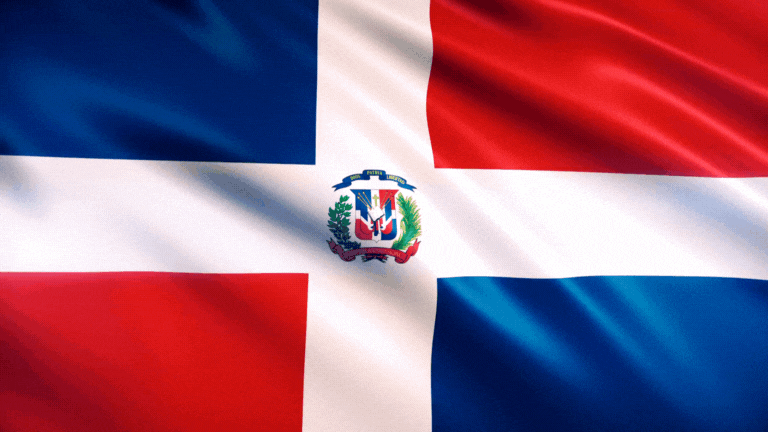Please be aware that this article may contain links to products and services we recommend. If you click on any of these links, we may earn a commission at no extra cost to you. We only endorse products and services that we believe will add value to our readers. Learn more here.
Dominican Republic Flag: History & Symbolism
Hack The Quiz
5/8/20243 min read
This article explores the history and symbolism of the Dominican Republic flag, detailing the country’s location in the Caribbean and explaining how the flag’s design reflects the nation’s Christian values, independence, and unity.
Where is Dominican Republic?
The Dominican Republic is located on the island of Hispaniola in the Caribbean, sharing the island with Haiti to the west. It is bordered by the Atlantic Ocean to the north and the Caribbean Sea to the south. Known for its stunning beaches, mountainous regions, and vibrant culture, the Dominican Republic is a popular tourist destination in the Caribbean.
The country gained independence from Haiti on February 27, 1844, and the national flag was first raised on that same day. The Dominican Republic’s flag represents the country’s hard-won independence and its strong ties to Christian faith and unity.
The History of the Dominican Republic Flag
The flag of the Dominican Republic was officially adopted on November 6, 1844, shortly after the country gained independence from Haitian rule. The flag was designed by Juan Pablo Duarte, a founding father of the Dominican Republic and one of the leaders of the La Trinitaria, a secret society dedicated to achieving independence.
The design of the flag was inspired by the French tricolor but was modified to incorporate a white cross, representing the Christian faith that has long been a central part of Dominican culture. The flag became a symbol of the country’s freedom and its commitment to maintaining sovereignty and unity.
Since its adoption, the flag has become a proud emblem of the Dominican Republic’s independence and has been flown during important national events, including Independence Day on February 27.
Breaking Down the Dominican Republic Flag’s Design
The flag of the Dominican Republic is divided into four quadrants by a white cross. The top-left and bottom-right quadrants are blue, while the top-right and bottom-left quadrants are red. In the center of the flag lies the country’s coat of arms. Each part of the flag’s design carries deep symbolic meaning tied to the country’s values and history.
Let’s break down the elements of the flag:
The Blue Quadrants
The two blue quadrants symbolize liberty and freedom. Blue represents the ideals of progress and the desire for peace, which are important values for the Dominican people.
The Red Quadrants
The red quadrants represent the blood shed by Dominican patriots during the fight for independence. They reflect the courage and strength of those who fought to liberate the country from foreign rule.
The White Cross
The white cross that divides the flag stands for faith and salvation. It symbolizes the country’s strong Christian beliefs and the unity of its people, serving as a reminder of their common heritage and values.
The Coat of Arms
At the center of the white cross is the Dominican Republic’s coat of arms. It features an open Bible, symbolizing faith and the power of God, with the words “Dios, Patria, Libertad” (God, Fatherland, Liberty) inscribed above it. The coat of arms also includes a shield flanked by a palm branch on the left and a laurel branch on the right, symbolizing the country’s readiness to defend its freedom and the triumph of independence.
Final Thoughts
The flag of the Dominican Republic is a bold and meaningful representation of the country’s values of freedom, faith, and unity. The red and blue quadrants reflect the sacrifices made for independence, while the white cross highlights the importance of Christianity in Dominican culture. The coat of arms, with its open Bible and national motto, reinforces the country’s commitment to liberty and the strength of its people.
Since its adoption in 1844, the flag has been a powerful symbol of national pride, flown during important celebrations like Independence Day and international events. It serves as a reminder of the Dominican Republic’s journey toward freedom and its enduring values of faith, unity, and resilience.
Expand your mind ...
Explore trivia that broadens your understanding and knowledge of the world.
WE ARE HERE FOR YOU
JOIN US and hack the quiz
info@hackthequiz.com
© 2024. All rights reserved.



